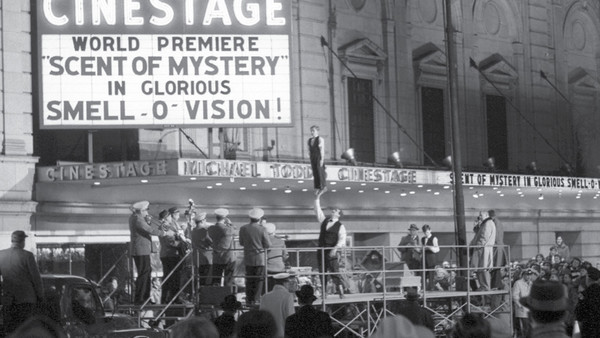10 Movies That Tried To Change Cinema Forever (And Failed)
6. Scent Of Mystery's "Smell-O-Vision" Pumped Odours Into Cinemas

If cinema is primarily accepted to be a visual and aural medium, filmmakers have very occasionally flirted with the idea of exploiting the olfactory system - that is, our sense of smell.
If you've ever walked into a room you haven't visited in quite some time, the smell alone may recall vivid memories you associate with it, yet despite the power of a good sniff, Hollywood has (unsurprisingly) made little headway with it.
The most famous example is the 1960 Jack Cardiff-directed mystery film Scent of Mystery, which pioneered "Smell-O-Vision" technology to pump smells relevant to what's occurring on-screen through vents installed beneath the cinema seats.
This was an attempt to upgrade the "AromaRama" tech created the year prior, which instead pumped smells through the cinema's pre-existing air conditioning system.
Ultimately both attempts to add a third sensory output to their movies fell upon deaf, uh, noses, with audiences and critics alike.
Since then, films have occasionally offered scratch-and-sniff odour cards as a cheaper alternative - for John Waters' 1981 film Polyester, and also 2011's Spy Kids: All the Time in the World - but it's almost always as a tongue-in-cheek gimmick rather than an earnest attempt to expand the audience's perception of a film.